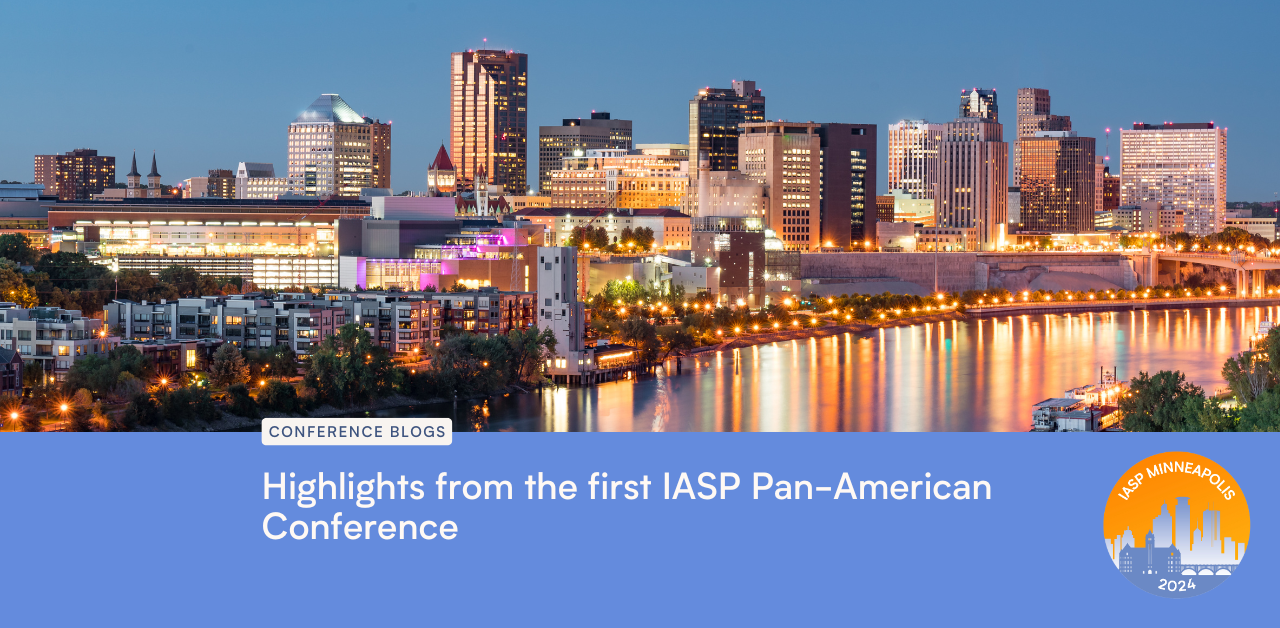Thursday at the first IASP Pan-American Conference in Minneapolis was a day full of impactful sessions and meaningful conversations, addressing critical topics in suicide prevention across diverse contexts.
The day began with a powerful plenary session featuring Professor Gerard Hutchinson, Dr Christine Moutier, and Marsha Oss. Gerard Hutchinson offered valuable insights into the evolving landscape of suicide in Trinidad and Tobago, with a particular focus on suicide trends in different populations and the presence of different suicide methods. Dr Christine Moutier emphasised the urgent need for increased investment in research and interventions to reduce suicide rates. Marsha Oss concluded the session by sharing her moving story of lived experience with suicide, reminding us of the human impact behind the statistics.
Later, I had the honour of chairing one of the oral sessions. This session featured three speakers addressing diverse topics: the use of coaching in clinical practice for suicide prevention, the effectiveness of suicide risk assessment training, and the role of bereavement and stigma in clinical practice surrounding suicide loss. These presentations underscored the importance of adopting nuanced and tailored approaches in clinical settings to address the complexities of suicide prevention.

Written by
Maggie Hardiman
Bournemouth University
Research Officer, IASP
Personally, this session prompted me to reflect on my own work in community-based suicide prevention and helped me process my experiences of bereavement after losing individuals I had supported through my work. It was a deeply resonant session that fostered conversations about suicide loss and the integration of lived experience in mental health and professional settings.
The Tribal Nations panel offered an eye-opening discussion on access to services for Indigenous and Native populations. One striking point was the significant geographic barriers faced by some communities, where travelling up to eight hours to access services is not uncommon. These barriers also extend to a lack of telecommunications infrastructure, complicating access to helplines and other critical resources. These challenges highlight the need for culturally and geographically sensitive suicide prevention strategies.
At lunchtime, I attended the IASP Special Interest Group on Helplines meeting. The discussion focused on practical challenges helplines face, such as managing regular callers, and emphasised the importance of creating a collaborative space to share best practices. This group aims to foster global guidance and support for individuals working in helplines, ensuring they remain a vital resource in suicide prevention efforts.
In the afternoon, I chaired one of the poster sessions—a new format for IASP at the Pan-American Conference – where presenters delivered concise, five-minute talks akin to condensed oral presentations. Topics included suicide risk factors among first-generation college students and the intersection of homelessness and suicide risk among veterans. These presentations provided valuable insights into underrepresented areas of research and practice, offering fresh perspectives on prevention strategies.
The day concluded with an engaging “In Conversation” session hosted by Dr Dan Reidenberg. This session spotlighted Patrick Kennedy and Stephen Fried, who shared their unique contributions to mental health advocacy. Patrick Kennedy shared his own struggles with addiction and mental health and the need to encourage policymakers to prioritise mental health. Stephen Fried brought a journalist’s perspective, highlighting the importance of in-depth storytelling to reduce stigma and raise awareness about mental health issues. Together, they addressed critical challenges such as integrating mental and physical health care records and the need for stronger public policy and advocacy. Their discussion reinforced the transformative power of personal stories in driving societal change.
Thursday was an enriching day that exemplified the breadth and depth of topics covered at the Pan-American Conference. From global policy challenges to deeply personal reflections, the sessions provided a comprehensive exploration of suicide prevention’s many facets. As we continue these vital conversations, I am inspired by the collective commitment to reducing stigma, advancing research, and fostering meaningful connections within our communities.





